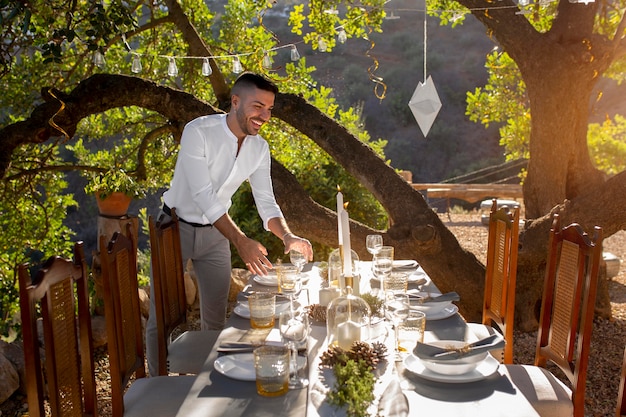
Nova Scotia in early summer offers sunny days and sparkling water without too many crowds. We spent a few days exploring Halifax, the provincial capital, with its historic attractions, harborfront walks, and city buzz. Then, we set out on a 3-day road trip to see more of Nova Scotia.
Nova Scotia is one of the three provinces in Canada’s Maritime region. The ocean is always nearby, with lighthouses on the wild south shore and lobster on almost every menu. As we drove to Nova Scotia’s north shore, we discovered a softer side of this Maritime province.
The rocky coastline transitioned into the rolling vineyards of the Annapolis Valley. The coast here is more sheltered in the Bay of Fundy, known for having the highest tidal range in the world, with gentle mud flats and shallow water at low tide. Here’s what we enjoyed during our 3 days in Nova Scotia.
Our first stop after Halifax was Peggy’s Cove, one of Nova Scotia’s prettiest attractions and a favorite for photographers. The iconic Peggy’s Cove lighthouse is a must-see. This picturesque fishing village is at the entrance to St. Margaret’s Bay, providing sheltered harbors and inlets for sailing boats.
The village still has working fishermen, with lobster pots and nets piled on the shore. Many old fishing shacks and painted wooden houses are now charming gift shops and artist studios. We found a visitor center and car park at the village entrance, then walked down the hill towards the cove.
Peggy’s Cove sits on a bed of grey-white granite, which becomes obvious when you reach the lighthouse. The houses here are compact with steeply pitched roofs to prevent snow buildup in winter. If you need accommodation near Peggy’s Cove, staying in one of the hotels in Halifax is a good option.
On our way to the lighthouse, we stopped at U-Cook Lobster, a mobile van that teaches visitors how to cook and eat lobster. We handled the lobsters with their claws safely secured but didn’t cook or eat any since it was too early for lunch. So, our lucky lobster lived for another day.
We continued to the lighthouse, just a 10-minute walk away. We spent some time walking over the rocks and around the iconic lighthouse, the most photographed in Canada. It’s a great spot for a picnic, but be cautious of wet rocks by the seashore as rogue waves can wash up suddenly. There are several art galleries and shops, as well as The Sou’Wester restaurant, where lobster and seafood are specialties.
Continuing from Peggy’s Cove towards Lunenburg along the South Shore, we passed through Mahone Bay, a pretty town perfect for a coffee or lunch stop. For a postcard photo, take a shot of Mahone Bay from across the water as you drive into town, where you can see the three churches in a row, their spires reflected in the bay.
This historic settlement has many pretty old houses from the 1800s when fishing and shipbuilding flourished. The Mi’kmaq people originally lived here, but from the 1750s, the British colonized the area, encouraging settlers from Germany and Switzerland. Old buildings have been converted to cafes and gift shops. We took a break at Jo-Ann’s Deli and Bakery. There’s plenty of parking along the waterfront, making it an easy stop on your road trip. If you’d like to stay in Mahone Bay, consider the charming guest houses available.
From Mahone Bay, it didn’t take long to arrive in Lunenburg, a UNESCO World Heritage site known for its well-preserved old houses and ship-building heritage. This is a place you could stay for a few days, with interesting small shops, waterfront cafes, foodie experiences, and the Fisheries Museum on the waterfront.
We started our visit with an Essential Lunenburg tour from Lunenburg Walking Tours, beginning at the Lunenburg Academy, originally the town’s high school but now being renovated into a community and arts center. Walking through the oldest part of town, we passed modest cabins built by German settlers. These original cottages, now renovated and painted, are highly sought after.
Our guide Ashlee, an eighth-generation Lunenburger, explained that the vibrant house colors are a recent trend. Traditionally, houses were black and white, as these paint colors were readily available in the shipyards. St. John’s Anglican Church, a Lunenburg landmark, was virtually destroyed in a fire in 2001 but was faithfully restored over four years at a cost of over $6 million CAD. It now stands in its full glory, surrounded by a village green.
We enjoyed the walking tour, which provided many stories and insights into the town’s history. Further down the hill on the waterfront, we admired Blue Nose II, a replica of the famous schooner built in Lunenburg. The original Blue Nose won the prestigious Fisherman’s Race in 1921 and became a Canadian icon, even featuring on the Canadian 10 cents coin. The schooners were fishing boats built for speed, as the first ship to return to port from the Grand Banks fishing grounds would get the best price for their catch.
In 1946, the original Blue Nose foundered on a reef, but a replica, Blue Nose II, was built in 1963. The ship is now a Nova Scotia sailing ambassador, offering young Canadians the chance to join the crew for six months and learn about sailing. Just along the waterfront is the Fisheries Museum of the Atlantic, housed in red-painted warehouses exhibiting collections from early Mi’kmaq fishermen to the present day. We enjoyed going on board some of the old fishing boats on the wharf that are part of the museum.
Our one-night stay was at the Brigantine Inn, a charming guest house overlooking the Lunenburg waterfront. The guest rooms are on the upper floors, with the Grand Banker Bar and Grill at waterfront level. Our room, named HMS Rose, was comfortable and offered a perfect view of the waterfront from the bay window.
For the last of our three days in Nova Scotia, we drove from Wolfville to the Shubenacadie Tidal Bore Rafting Resort. It’s located where the Bay of Fundy narrows into the Shubenacadie River. The resort offers a unique adventure experience on the rapids that form when the tide rushes into the river channel.
Kitted out in warm waterproof jackets and life preservers, we were ready for our adventure. Our group of eight walked down the muddy track to the river and clambered into the zodiacs, navigating the shallow channels between the sandbars. The water and shoreline had a distinctive red color, with bald eagles circling overhead. As the tide rose, we powered along to meet the tidal bore, creating rapids and whirlpools in the river.
It was an exhilarating experience, but I was relieved when we returned to base, handed back our gear, and took a hot shower. After our Tidal Bore rafting adventure, Steve showed us around the spacious holiday cabins available for rental. They are popular with groups of friends or families wanting to get away among the natural surroundings by the river.
We loved this exciting river rafting tour, which makes a unique Nova Scotia experience and a must-do if you are in this area.
After this final stop in Nova Scotia, we drove on to spend a few days in Prince Edward Island. We had a great taste of all that this maritime province of Canada can offer, from the wild south shore to the fertile farmlands and tidal waters around the Bay of Fundy. This 3-day Nova Scotia road trip is easily combined with the historic sites, museums, and foodie culture of Halifax, where we started our journey, and a few days in Prince Edward Island, where we were heading next. We feel that we hardly scratched the surface of Nova Scotia, but we loved what we saw. Canada’s a big place, and there’s lots more to explore!









